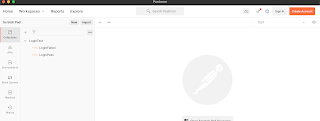Postman test cases on Jenkins

1. Download and install postman - https://www.postman.com/downloads/ 2. Open postman and click on collection Create new folder and start writing test cases - This will generate test suit for you ( postman collection for test cases ) 3. Click on Environments and add key, value pair for the environment variables Example - We can specify environment details here so that same test case by changing env can be executed on multiple environments like - DEV, QA, UAT and PRD 4. Now export postman collection and environment postman.collection.testcases.json postman.collection.env.json 5. Now install node js - https://nodejs.org/en/download Install below node packages also - sudo npm install -g newman sudo npm install -g newman-reporter-htmlextra 6. Now go to the folder where postman collection and environment json are store 7. Run b...